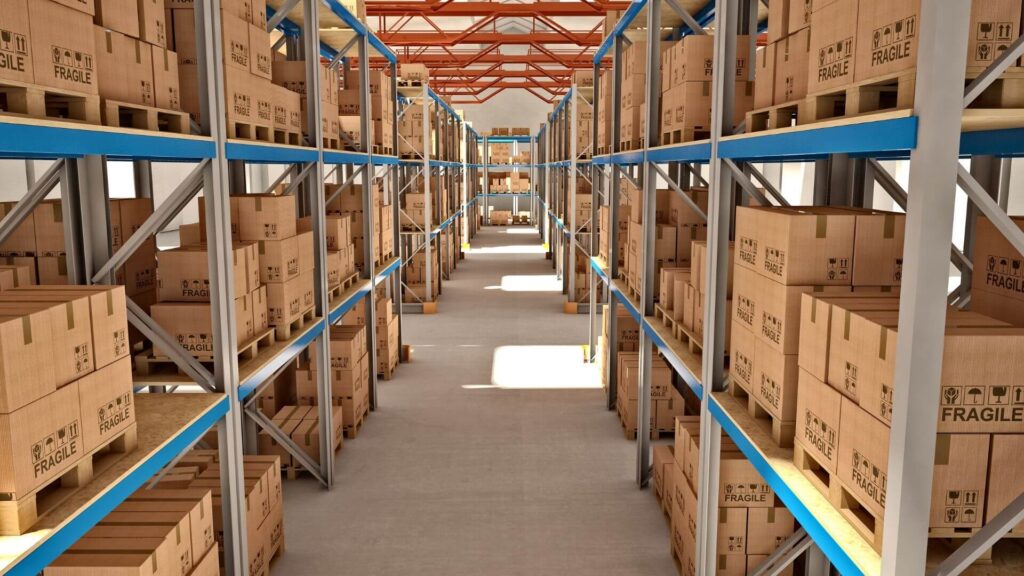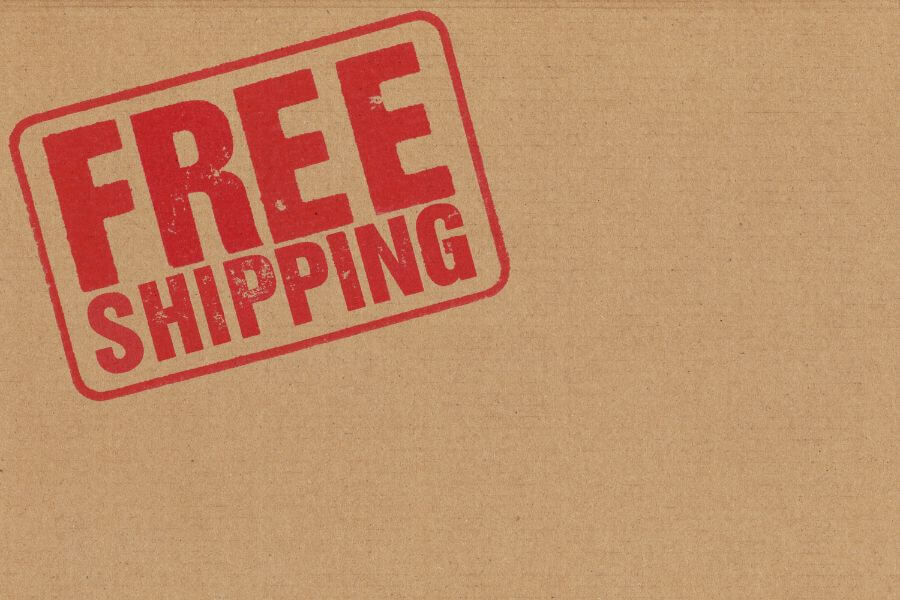Finding the products you want at the best price has never been easier, thanks to online shopping. A worldwide customer base and nearly limitless scalability are driving e-commerce platforms to increasingly replace brick-and-mortar stores.
Online shopping may be convenient, but a positive customer experience remains important for success. Your business could suffer if the customers’ purchases are delayed or their shipments are late, which could potentially lead to customer repeat and important customers. Thankfully, with the existence of fulfillment centers, the chances of this happening can be reduced by utilizing their services to manage your store’s inventory and avoid backups and shipping interruptions. E-commerce fulfillment centers take care of global order processing and fulfillment for your e-commerce brand.
The services provided by fulfillment centers, also referred to as third-party logistics companies can greatly expand your order fulfillment capabilities. They are responsible for the entire order processing, shipment, and delivery. Upon receiving the order, they prepare it for shipping and deliver the order to the doorstep of the customer.
Here, we will explore the convenience of fulfillment centers for online retailers. We will cover what a fulfillment center is, how it compares to warehouses and the specific advantages of using a fulfillment center. Also, we’ll provide tips on how to select the right fulfillment center for your business.
What is a Fulfillment Center?
A fulfillment center is a physical location where retail orders are processed and fulfilled. A fulfillment center manages the seller’s inventory, stores the inventory, ships orders directly to customers and/or retailers, and works with sellers to coordinate and manage the entire fulfillment process. Let’s examine the typical order fulfillment process for a small to midsize online business to help you better understand the intricacies involved.
Upon receiving an order from a customer, you pick up those items from your inventory, package them, and hand them over to a shipping company for delivery. This means that you spend most of your time packing consignments and delivering them to the appropriate shipping companies, depending on how successful your business is. Picking and shipping products become more difficult when you get more orders. By managing your inventory all by yourself, you risk making costly mistakes and having multiple items on backorder, which leads to delays in shipment, and hence, unhappy customers.
Let’s take a closer look at how this would work if you decided to use a fulfillment center instead.
How does a Fulfillment Center Operate?
In outsourcing order fulfillment to a 3PL, the seller’s processes are handled by a professional fulfillment center. Among the services provided by order fulfillment companies are storage, receiving, packing, shipping, negotiating lower shipping rates, handling high-volume demands, and often lowering fulfillment costs for additional order processes.
This information about each order is passed to a 3PL provider or fulfillment center. Your inventory is already stockpiled in storage at their facility. The center takes your order, gathers the items you acquired from manufacturers, and packages them. Next, the order is sent to a shipping carrier, which delivers it to the client. While it’s the same process, it takes the burden off of you and, most of the time, makes it easier and faster.
Fulfillment centers provide quick, efficient, and cost-effective services for fulfilling orders. Both business-to-customer (B2C) and larger business-to-business (B2B0 orders can be processed through fulfillment centers. Generally speaking, B2B orders are sent to retailers, while B2C orders are delivered directly to customers.
E-commerce platforms and sellers who outsource their order processing and fulfillment to a third-party fulfillment center can save time and improve customer satisfaction by making inventory management easier, and allowing them to focus on more important business tasks.
A Look at the Challenges Faced by eCommerce Stores
To take advantage of online shopping, customers must have access to a variety of products that they might not find at traditional retailers, depending on their location. Customers are also able to compare prices while shopping online. The key to successful online shopping goes beyond finding the best price – it’s more about ensuring that the shipment and order delivery is fast, cheap, and efficient and the customer experience is, therefore, positive.
Online shopping is a great way for sellers to reach a large customer base that isn’t restricted to a single area. There are a few challenges associated with such a strategy, even if it creates higher sales margins. An example of an online merchant’s problem is overselling. A merchant faces this issue when their inventory is insufficient to fulfill all the orders for an item.
Once the item is out of stock or shipping will take longer, the company is obliged to contact their customers. Neither option is ideal, which can negatively affect customer satisfaction and damage sales. It’s important to take note that even one angry customer can write a negative review about your products that could deter other potential customers from making a purchase.
Aside from overselling, many online merchants are also forced to deal with specific shipping problems, such as mis-picking and mis-shipping. Mis-picks occur when a merchant picks the wrong item and mis-ships happen when the wrong item is shipped to the customer. In both cases, the item is returned. If the incorrect item is shipped, the customer is likely to simply cancel the order rather than wait for the correct one to arrive.
As long as an online business is managing a large number of inventory items, it is more likely to encounter problems when it comes to managing inventory. In this case, the online shop owners might want to consider a fulfillment center if they’re experiencing these and other issues when directly managing their inventory.
Fulfillment Centers vs. Warehouses: How Do They Compare?
Fulfillment centers are sometimes referred to as warehouses, but they are actually two distinct concepts. It is true that both buildings are used to store business inventory, but the services they offer can differ quite a bit. Let’s take a closer look.
Storage: Long-term versus short-term
Storage solutions like warehouses are used for storing products for long periods of time. A warehouse is typically a large, industrial space used for storing inventory items in bulk. You would see products being moved on large pallets by a forklift in a warehouse, stacked high with large quantities of similar products.
Large wholesalers and businesses fulfilling business-to-business orders primarily use warehouses. For retailers who have a varied inventory and who store large quantities of products, warehouses are generally the best option. Even though large retailers sometimes can afford to purchase warehouse space, small to midsized retailers usually find leasing the most cost-effective option here. For small businesses, renting storage facilities may be the wisest decision.
Fulfillment centers, on the other hand, perform some of the same functions as warehouses, while also providing some additional services. 3PL fulfillment centers include warehousing in their services, where their warehouses store the sellers’ product inventories.
Fulfillment centers not only store inventories but also handle orders for customers. In the case of e-commerce stores, for instance, orders are sent to fulfillment centers, where the inventory is picked, packed, then labeled for shipment and delivered to the customer. You can outsource order processing to a fulfillment company, which frees you up to focus on other business areas.
An inventory will not remain in a fulfillment center for more than 30 days in the best-case scenario. In the instance where inventory must be stored for a long time, a 3PL may charge you a higher warehousing fee. Sellers and 3PLs should be in constant contact about inventory levels. For 3PL fulfillment centers to fulfill customer orders, a seller must maintain appropriate levels of inventories relative to how frequently customers place orders.
The pace of operational activities
Since warehouses are just for storing inventory, their operations tend to be fairly static, whereas fulfillment centers are much more complicated and constantly in motion. This is because a fulfillment center provides end-to-end order fulfillment solutions as well as receiving inventory, picking products, packaging orders, labeling shipments, turning over orders to the shipping carrier, and managing customer returns and exchanges. In contrast, adding inventory or shipping it out is the only activity in a warehouse.
The frequency of pickups
Fulfillment centers typically receive daily pickups from shipping carriers, while warehouses usually receive scheduled less-frequent pickups.
Multiple shipping companies are often associated with 3PLs. To fulfill B2B and B2C orders promptly, fulfillment centers need multiple companies to pick up shipments once or more in a day at a minimum. The process ensures that orders will arrive in the specified time frame right at the doorstep of the customers.
Shipping carriers may be called upon to pick up orders with special delivery times, such as same-day or next-day, at specific times if the seller wishes for the products to be shipped that way. Certain carriers may have a regular time for picking up shipments, both domestically and internationally. It is common for fulfillment companies to have a cutoff time for orders to be placed according to the delivery speed selected by the customer. Orders placed by noon, for example, will be delivered the next day.
For a warehouse, on the other hand, pickups are typically less frequent because it is more efficient to send out all items at once, regardless of the customer’s speed preference. Often, warehouses use freight companies that insist on a certain delivery time, which delays the delivery of the goods and limits the seller’s ability to control shipping costs.
How do Fulfillment Centers Benefit Your Business?
As an alternative to managing your own inventory, a fulfillment center offers the benefit of not having to deal with the ins and outs of inventory management like storing, shipping, and returns. E-commerce companies have a complicated supply chain, and fulfillment centers provide an easier way to manage it. Once you use a fulfillment center to maintain your inventory, you’ll notice that the order fulfillment process is must smoother. Furthermore, you’ll free up more of your time so you can focus on growing your business instead of micro-managing it on a day-to-day basis.
Hiring the services of a fulfillment center offers the following benefits:
E-commerce businesses save money by using fulfillment centers
Fulfillment centers typically deal with dozens of clients at the same time. Their extensive clientele combines to give them a lot more buying power when dealing with their vendors. Fulfillment companies can leverage the combined volume to secure substantial discounts on materials which then can be passed on to their customers. Aside from that, the seller wouldn’t have to manage or staff their own fulfillment center.
One of the largest order fulfillment expenses a seller faces is shipping, which can account for up to 70% of the total costs. A large number of fulfillment companies receive group discounts from shipping carriers, which are passed on to sellers.
Storage and management of inventory can be outsourced
An e-commerce seller who does not ship thousands of items daily may find managing a full-fledged warehouse to be more laborious and costly than it is worth investing. Fulfillment centers are much more efficient at handling these tasks. Using a fulfillment center is a good idea when a seller cannot manage the flow of orders coming in and shipping them out as quickly as they used to.
Giving the seller the opportunity to focus on the big picture
While order processing, picking up products, and packing boxes are all critical to the bottom line of a company and these tasks are also easily outsourced to a 3PL company that has extensive experience handling them. Designating these tasks to a 3PL specialist can free up a growing online business to focus on strategic planning, customer service, and marketing.
Fulfillment of e-commerce orders
Increasingly, customers are making their purchases online instead of visiting brick-and-mortar stores, which means sellers must partner with an experienced fulfillment company that has the operational expertise and technology to manage their e-commerce order fulfillment. The operational processes needed to fulfill hundreds, if not thousands, of e-commerce orders daily necessitate connecting to the sellers’ e-commerce platform.
Ideally, these fulfillment companies can scale rapidly to meet the growing needs of e-commerce sellers. In e-commerce businesses, seasonality and various promotions throughout the year often result in big spikes in sales in a very short period of time. The fulfillment company should be able to provide the sellers with sufficient space and labor flexibility so that the seller’s needs can be met without compromising service or quality.
There's no need for a warehouse
If your business is wildly successful and your inventory is growing rapidly to meet customer demands, you know what it feels like to have excess inventory, whether it’s in your garage, office, or storage space. Fulfillment centers eliminate the hassle of finding physical space for your inventory, which is particularly useful if you have a small business that is run out of your house.
Two-day and overnight delivery options are available
A fulfillment center enables you to provide 2-day or overnight shipping to your customers and speeds up the overall fulfillment process.
Management of inventory improved
By choosing a fulfillment center, you’ll be able to keep track of your stocks so that you always know what is in stock and what is not.
Processing of returns
If you use a fulfillment center, you can avoid a lot of hassle when it comes to returns and exchanges.
Shipping rates are discounted
In order to save you money on shipping, fulfillment centers negotiate with shipping companies. This means you enjoy lower shipping costs and increased profit.
Distribution of inventory
Considering the location of the fulfillment centers and their proximity to most of your customers are some of the biggest factors in choosing a 3PL. Shipping costs are reduced if your product travels less distance, meaning that it gets delivered to your customer faster.
When it comes to making online purchases, consumers expect convenience and speed of delivery. Storing your product in a location near the majority of your customers or near metro regions can help your business reach large numbers of customers so you can pick, pack, and ship as fast as possible, ensuring shoppers receive their orders on time.
Automation of the fulfillment process
Modern 3PL fulfillment centers use the latest technology to process and fulfill orders on your behalf. Using this method, every step of the fulfillment process can be recorded in real-time. The e-commerce shopping cart automatically sends each order to a fulfillment center for picking, packing, and shipping. The seller and customer can receive tracking information once the order is shipped to ensure that all goes smoothly.
3PLs can track and collect data about a seller’s inventory by using sophisticated logistics management osftware. Data like this can be helpful for benchmarking growth and predicting trends. Oftentimes, 3PLs are also able to share their digital tools with their sellers over their technology infrastructure. The ability to keep track of shipping costs, order fulfillment, and inventory levels from your smartphone is so very helpful, especially to a small business owner.
Provides value-added services
In addition to picking, packing, and shipping orders, fulfillment centers enable sellers to take advantage of other related services, often called value-added services. Kitting, assembly, and returns management (also known as reverse logistics) are some examples of value-added services.
A seller’s ability to adapt to their customers’ needs and market trends is greatly enhanced by having these services available at their fingertips. The following examples fall within the definition of value-added services: labeling and packaging customized to your needs, assembly of new SKUs, marketing inserts and branding, managing returns, and automating the process.
Factors to Consider When Selecting a Fulfillment Center
You should consider a number of factors when choosing a 3PL fulfillment center to handle your order fulfillment. First and foremost, you need to consider whether a fulfillment center is an effective solution for your business or not. 3PL providers charge different rates, but they are likely to include warehouse space, equipment, warehousing management, staff salaries, workers’ compensation and liability insurance, packaging supplies, and postage, among other costs. Several 3PL providers provide flat-rate service, while others charge per tasks, such as for picking and packing.
It may sometimes cost more to outsource your order fulfillment than doing it yourself, but when you really think about it, your time is what you are saving. It may be sensible for your business to hire a professional to help manage inventories and fulfill orders if these tasks are preventing you from doing the work you need to grow your business.
When choosing a fulfillment center, take into account not just the cost involved, but also whether the center is compatible with your e-commerce platform. How your 3PL receives, processes, and tracks orders depend on the software you use. Choosing a provider that can integrate with your existing software is simpler than using a different platform for all your e-commerce needs. In light of these factors, here are a few simple recommendations when selecting a third-party fulfillment center.
Examine your current shipping procedure
Analyze your inventory and shipping processes more closely. It is important to identify existing issues and determine whether a 3PL provider can resolve them.
Check out your options by doing some research
3PL providers may be available in your region, or you can choose one closer to your largest customers.
Contrast & compare the services being offered
There are a variety of 3PL providers, so knowing how your business operates can help you find a provider that fits your needs.
No more than three providers should be on your list
Once you have created your list of options, narrow it down to three companies. These are the ones you will evaluate on a more in-depth level to get a sense of your real decision. A list larger than three would be too overwhelming.
You should do a little research on the companies you are considering
You can rely on your chosen 3PL partner to handle returns efficiently and fulfill your customers’ orders. To maintain a consistent and satisfactory customer experience, you need to work with a company that has similar culture and values to yours.
Consider compatibility in technology
Choosing a 3PL provider that is compatible with your existing management software can save you the hassle of switching providers if your business is still fairly new.
Scalability must be planned in advance
You will be able to focus more time on growth measures if you outsource your order fulfillment. Make sure the 3PL provider you choose can adapt to your business needs as they change or evolve over time.
Providers who use distributed fulfillment services are the best
It is likely that your business has customers from all over the country, depending on what you sell. The 3PL provider should have multiple distribution centers so that costs can be kept low and efficiency can be improved.
Customers' experiences and satisfaction should be taken into consideration
Your own brand is paramount to your business, but your 3PL experience should also be positive. Choose a company with proven experience in order fulfillment that you can trust to manage day-to-day operations for your business. The financial stability of a provider is also important, and you should look for a company with extensive industry references. Do not hesitate to check these references out!
Pricing should be negotiated
Some 3PL providers charge by the size of your business, while others charge by the type of services you request. The exact price and which services are included in your chosen package will need to be determined by your chosen provider. It is imperative that you sit down with your 3PL provider and discuss your requirements. A lot of companies that switch to using fulfillment centers fail to follow this step and end up feeling frustrated when there isn’t a clear process.
Ensure that the company knows exactly what you expect from them and how they will meet those expectations before you sign a contract. Determining which responsibilities you will outsource to a 3PL and which you will handle in-house is important. Organize regular team meetings with representatives of the 3PL as well. The 3PL’s performance will be evaluated and any modifications needed are discussed in these meetings.
The Bottom Line
Customer satisfaction is vital to your online business’s success. In addition to recommending your e-commerce brand to others and becoming repeat customers, satisfied customers are more likely to recommend your products, order fulfillment process, and customer service to others if they are satisfied and happy.
Your job as a business owner is to make sure your products are of the highest quality and to keep track of the changing needs of your shoppers. Perhaps it would be better to outsource your order fulfillment to a third-party logistics provider so you can concentrate on those things. By utilizing a third-party logistics provider, you can streamline your order fulfillment processes and improve customer satisfaction, so you can devote more time to business growth.
If you are thinking of hiring a fulfillment center, consider what you’ve learned here and how a provider can meet your unique needs and requirements. Once you have selected an order fulfillment partner for your online business, simply wait and watch your business grow.





